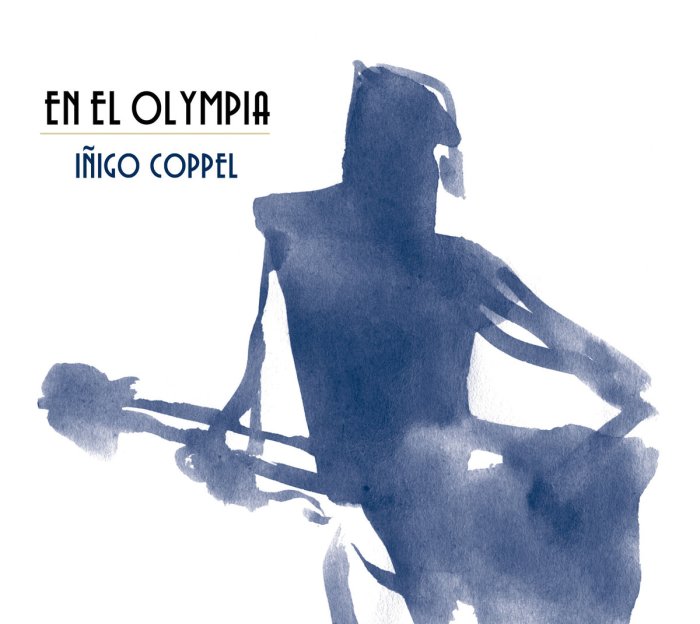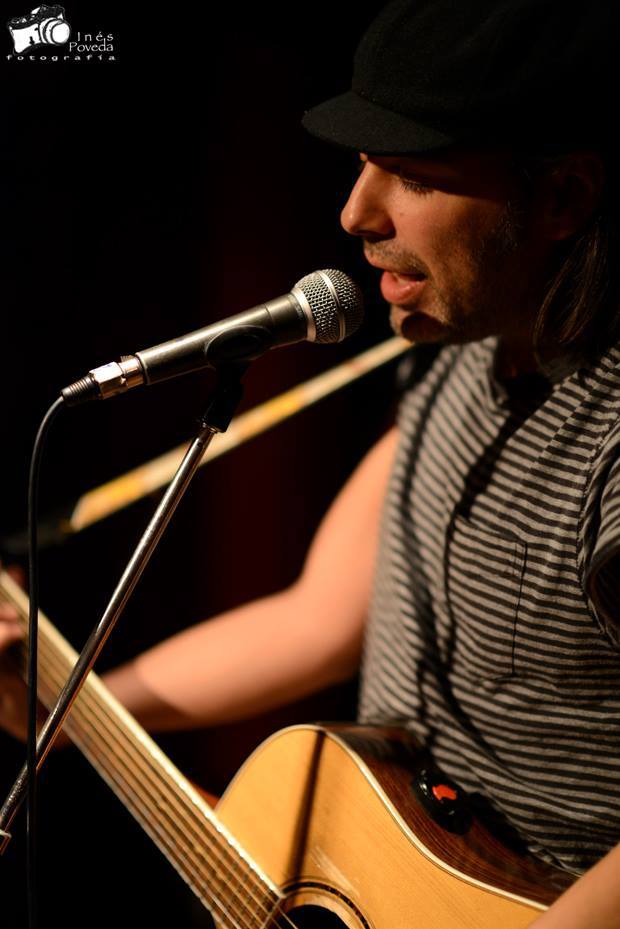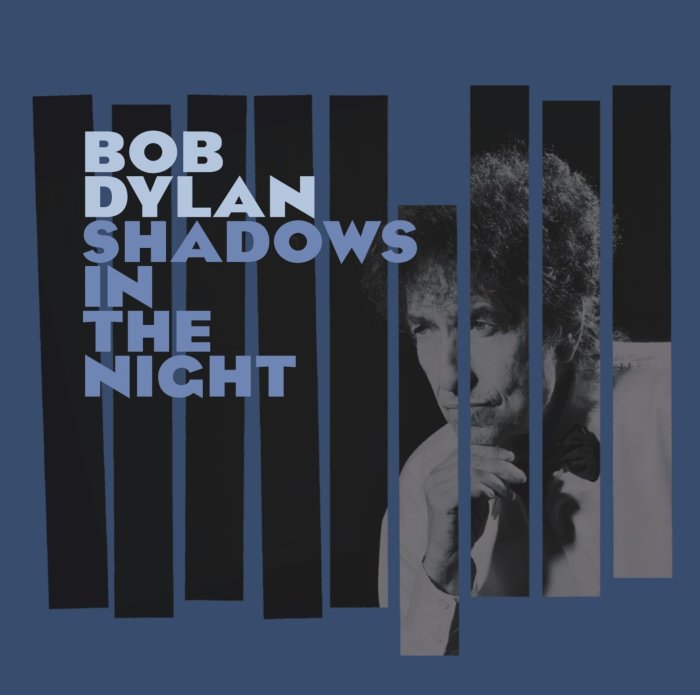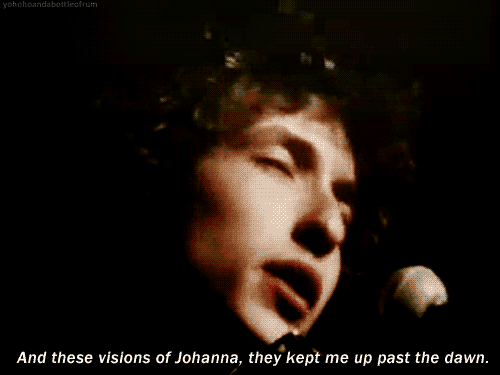Pongamos que uno introduce “Bob Dylan” en el buscador de Google… y si accidentalmente añade una Z, por esas azarosas cuestiones de la vida, el propio mecanismo de búsqueda inmediatamente sugiere la palabra “zurdo”. Por mera curiosidad uno sigue el consejo que la tecnología moderna pone a su alcance y, de forma insospechada, una interminable lista de enlaces aparece ante nosotros. Todos ellos relativos a la condición de zurdo de Mr. Dylan o mencionando al gran artista de Columbia Records como uno de los zurdos mas famosos de la historia. Aunque resulte inconcebible, el “Hombre más Buscado” de 1,71 m de altura, es citado como tal, entre otros, como pudiera ser el ex-Beatle Paul McCartney, por poner un ejemplo, sin pudor alguno. Sin embargo, cualquiera que le haya visto alguna vez actuar en directo o conozca mínimamente la figura del trovador de Minnesota, sabe que eso no es del todo cierto – al menos en lo que se refiere a su condición de intérprete. Se sabe que Bob Dylan ha sido fotografiado firmando con la izquierda, así que debe ser ambidiestro, pero siempre ha tocado la guitarra con la diestra. Esto viene al caso porque creo hoy necesario, al iniciar la crónica de este debate, partir de la premisa de que hay falsos testimonios que a fuerza de repetirse hasta la saciedad acaban perpetuándose como verdaderos.
Pero ese cúmulo de falsedades en torno a su persona es algo a lo que el cantautor Americano ya está acostumbrado desde siempre. Ya lo decía en su sensacional diatriba titulada “Idiot Wind,” “They are planting stories in the press (Siembran historias en la prensa) …” Otra de las falsas apreciaciones comúnmente aceptadas acerca de Dylan es la de su cacareada discapacidad para cantar. El propio Dylan se quejaba de ello en el discurso de aceptación de su nombramiento como personalidad del año de MusiCares.

Bob Dylan accepts the 2015 MusiCares Person of the Year award on stage at the 2015 MusiCares Person of the Year show at the Los Angeles Convention Center on Friday, Feb. 6, 2015, in Los Angeles. (Photo by Vince Bucci/Invision/AP)
¿Por qué le acusan a él de tener voz de rana o, más recientemente, gastada y rota por el abuso del tabaco y no atacan a otros como Tom Waits o Louis Armstrong? Eso, entre otras cosas, le ha conducido no solo a grabar un álbum interpretando viejas canciones que antes hiciese populares Frank Sinatra, sino a repetir la experiencia por segunda vez y, si los rumores se confirman, incluso acometer una tercera entrega. No cabe duda de que hay una clara intención de recuperar un antiguo estilo inequívocamente Americano cuyas raíces se hunden en el terreno abonado de la más pura tradición Estadounidense. Dylan no se conforma con reafirmarse como “crooner”, sino que parece empeñado en demostrar al mundo que pude cantar los temas más melódicos con esa gutural voz suya, tan afinado como cualquiera y tan sutil y conmovedoramente como el más aventajado de los intérpretes.
Su trabajo en estos 2 últimos discos lo demuestra y así ha sido reconocido, en general, por reporteros y comentaristas. Incluso en ocasiones han llegado a proclamar que nunca antes había cantado tan bien.
Contrariamente a esa resolución de nuestro héroe, ahora resulta que Bob Dylan ha cumplido 75 años y se ha puesto de moda una corriente detractora que incluso aboga por una retirada a tiempo, como si al genio o a la voluntad creadora pudiese ponérsele fecha de caducidad. Precisamente con motivo de su reciente cumpleaños un osado columnista profesional dedicaba su espacio en el New York Daily News al insigne compositor con un infecto artículo titulado “At 75 Years Old, it’s Time For Burnt Out Bob Dylan to Retire (A los 75 Años, ya es hora de espolear a Bob Dylan para que se retire)”.

Haciendo caso omiso de la mezquindad y el oportunismo de insignificantes críticos como el del diario Neoyorquino, voy a centrarme en el acalorado y divertido debate que tuve hace un par de semanas con un colega Italiano, reconocido fan de Bob Dylan. Mi amigo se quejaba del aburrimiento que supone en la actualidad asistir a un concierto de su artista favorito, especialmente cuando se empeña en cantar esos temas tan manidos, viejunos y a simple vista alejados de la inquietud creadora que el resto de su obra siempre denotó.
Este bien documentado fan italiano comentaba que muchas de las personas que asisten a los últimos conciertos de Dylan no prestan demasiada atención mientras él canta las canciones de Sinatra, refiriéndose en concreto a una nueva canción estrenada esa noche durante el concierto que se discutía. Muchos entre el público paseaban por el recinto, hacían llamadas telefónicas o se tomaban el bocadillo. Pero mi colega, al comentar el video de Dylan versionando por primera vez en el escenario “I Could Have Told You (Podría Habértelo Advertido)”, explicaba tal comportamiento de una manera bastante condescendiente diciendo “Entiendo por qué sucede eso, le falta energía, carisma, interés, no llama la atención, es bastante aburrida, la verdad … aunque eso no significa que tengan que abandonar su localidad, hacer llamadas telefónicas, o tomarse el bocata”.
Tuve que aclarar que esos no estaban allí para ver a Bob Dylan. Quién sabe la razón por la que habían comprado entradas para asistir a un concierto de Dylan, pero en cualquier caso, no mostraban ningún respeto por el artista. Agregué que no sabía lo que quería decir cuando hablaba de “aburrimiento”, porque sin duda Dylan ponía el alma en ello y hacía una versión bastante agradable, en perfecta sintonía y cargada de emoción. Quizás no sea la más bella versión de las suyas, de entre el lote de viejas canciones de Sinatra y del Tin Pan Alley que ha escogido recientemente, pero de todos modos una interpetación bastante digna, creo yo.
Una mujer estadounidense se sumó a la discusión y replicó: “Es una cuestión de gusto. No encuentro aburrida esta balada en absoluto, y sinceramente, me fascina como la canta Bob y el sentimiento que pone en la canción. Cantó muchas de estas canciones de ‘Sinatra’ en Japón y la audiencia no se comportó de esta manera… lo mismo ocurrió en muchas ciudades Europeas el pasado otoño. Creo que el problema es más una cuestión de cultura o falta de educación en América”. Aunque, personalmente, creo que no son sólo los Americanos, también ocurre en algún que otro país de Europa, como ocurre en España. Lo que me queda claro es que no tiene nada que ver con que Dylan sea aburrido o impresionantemente conmovedor.
Por supuesto, “aburrido” es bastante subjetivo. Cualquier cosa puede resultar aburrida si uno no le presta la atención necesaria para meterse en la temática que transmite la canción. Mi interlocutor se mostraba en desacuerdo ahí… porque la música, la voz de Bob, su fraseo, siempre encontraron una forma de conectar con él, de llamar su atención, de inmediato, es como un gancho, dice, incluso en las canciones menos interesantes… “aburrido” es la palabra clave aquí, según él, y no sólo él, sino también el propio Dylan. Decía: “Obviamente, soy yo la persona que siente de esa forma, pero basta con que escuche otras actuaciones y eso ya no sucede, nunca sucedió y nunca lo hará … si tengo que hacer un esfuerzo para encontrar la chispa , bueno… tal vez la chispa no esté ahí…”
Cuando escucho a alguien declarar que no encuentra la chispa en una determinada interpretación que a mi me encanta no tengo más remedio que decir: “Lo siento por ti, amigo”. Lo pillas o no lo pillas. Es así. Como ya he dicho otras veces, para mí no se trata de lo que hace Dylan, es simplemente la forma en que lo hace. Ese es el quiz de la cuestión cuando se trata de estas versiones que Dylan hace de las canciones de Sinatra. Hay para mí tanta energía, interés, sentimiento y emoción en el corazón y el alma de Dylan ahí, como había en “Idiot Wind” en la versión de “Hard Rain”. La diferencia es sólo el tipo de energía, interés, sentimiento y emoción que muestra ahora. Ya no es aquél que cantaba su rabia a los 4 vientos reclamando el respeto a su individualidad. Ahora, con el paso de los años, trata de recuperar los sentimientos de aquellos días perdidos cuando era solo un niño escuchando la radio en la intimidad de su habitación, oyendo a su madre cantar las canciones que ella solía cantar mientras hacía las labores de la casa en aquél entonces. Sólo trata de recuperar la esencia de sus raíces para todos nosotros, porque lo esencial en esta vida esta precisamente en nuestra memoria de algo así como cuando siendo niños caminábamos por la calle de la mano de nuestra madre.
El crítico fan respondía que en realidad se trata de ambas cosas, lo que hace y cómo lo hace, pero estaba totalmente de acuerdo conmigo en que cómo lo hace es super-relevante. Él nunca había esperado lo mismo de Bob, reconociendo que la evolución es un elemento clave en su obra. Pero nunca compararía cualquiera de sus recientes versiones de añejas baladas con “Idiot Wind”, en ningún caso. ¿Por qué hacerlo si se trata de evolución? Para él, el valor de todo este aluvión de canciones de Sinatra no está históricamente probado en parte alguna, y no sabe si la madre de Dylan solía cantar esas canciones cuando era joven, pero evidentemente, en realidad, eso le importa más bien poco. Decía que cada vez que un artista lanza algo nuevo adquiere una responsabilidad. De hecho, piensa, como muchos de estos detractores, que estas canciones son aburridas para él, incluso si no lo son para Bob, en primer lugar, y, desde su punto de vista, hablando de esta particular versión de “I Could Have Told You (Podría Habértelo Advertido)“, la interpretación es plana, de una canción plana, y no porque Bob Dylan ya no sea el tipo de 35 en Texas, sino porque es plana, y punto. Ni siquiera está, digamos, en la liga de “Autumn Leaves”, u otros “standards”. Y terminaba su párrafo con una especie de frase respetuosa para aquellos que aún disfrutan de este tema: “Me alegro de que te guste y que a otros les guste también. Para mí es sólo una canción sin interés, cantada con poco interés por el individuo en cuestión...”

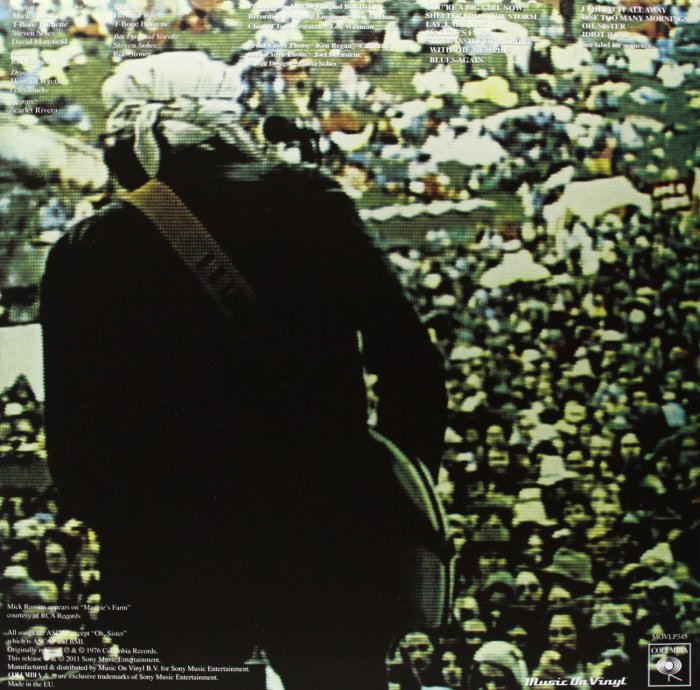
Para ser honesto, yo comparaba la clase de energía y la motivación, no las actuaciones, cuando hablaba de la sobresaliente versión de “Idiot Wind” de “Hard Rain”, el álbum en directo de 1976, porque siendo diferentes producen un impacto similar en mí. No tengo ni idea de si la madre de Dylan cantaba o no estas canciones, lo que realmente quiero decir es que Dylan las esta rescatando desde el fondo de su memoria, de los viejos tiempos de cuando era un niño y solía escuchar estas y otras muchas canciones en las noches de radio. Me refiero a que realmente significan mucho para él y que lo único que desea, a parte de revivirlas, es que todo el mundo preste atención a estas canciones, porque hay una verdad esencial en ellas que quizás piensa que se ha perdido hoy en día, o al menos se pasa por alto.
No había mucho que decir en contra, por lo que la respuesta de mi colega fue breve: “Tal vez tengas razón, no voy a debatir sobre ese punto de vista / u opción”.
Con algún sarcasmo, le respondo: “Tal vez tengas razón por tu parte y yo tenga razón por la mía, tal vez Bob Dylan y tú ahora estéis demasiadas mañanas y mil millas detrás uno del otro”.
Como cualquier fan inteligente de Dylan me habría dicho, él indicó: “Bueno, su poder todavía me impacta (y no me refiero a cantidad de energía), me gustaría un reinicio, un replanteamiento y una nueva inspiración… o de otro modo, podríamos pensar que, posiblemente, cualquier cosa que haga, nunca podría ser expuesta a crítica alguna”. Mi amigo, para seguir siendo consecuente con sus sensaciones, continua argumentando: “Creo que todavía tiene el poder, la intensidad y la voz para cantar canciones, pero por alguna razón está escogiendo algunas que son aburridas para mí (y para muchos otros, si eso importa) y ha dejado su poder (el del fraseo y la improvisación), tan sublime, en algún anaquel, junto con sus crueles armas… la guerra probablemente ha terminado, quizá logró una cierta paz, bien por él, no tanto por su arte … volver a enviar la misma postal de los 50, noche tras noche, en una xerocopia, no es exactamente el mejor final para el Picasso del Rock, y entendedme bien, no deseo ningún tipo de actuación al estilo Jagger aquí… pero la repetición plana no funciona realmente para mí. Sé que muchos no estarán de acuerdo, pero es lo que hay…”
Sí -le dije- te conozco, y sé lo que querías decir. Muchos todavía están de acuerdo contigo, ¡pero yo estoy encantado de que Dylan siga vivo y siga haciendo lo que él cree que debe hacer! Ya le dijo a todo el mundo ahí fuera en este mundo que no trabajaría en la granja de Maggie nunca más. Se ha mantenido siempre fiel a dicha declaración y realmente le respeto por eso, y me siento comprometido conmigo mismo para tratar de entender y profundizar en el asunto de aquello que transmite, ahora y siempre. Eso no quiere decir que no haya ninguna crítica más, yo le podía criticar por hacer las cosas mal, aunque he llegado a una conclusión, NO PUEDE estar equivocado, porque es auténtico como el hielo, como el fuego. Todo lo que hace, en el momento en que lo hace, está firmado y sellado con la furia a veces, el desprecio, la pasión, la apatía, la nitidez, la pereza, la indolencia, la amargura, la fe o cualquier otro sentimiento noble y auténtico que pueda tener en el mismo momento en que está sobre el escenario. Tratándose de un artista con la agudeza mental y el profundo compromiso con su trabajo que Dylan siempre ha tenido, eso supone un torrente de emociones para mí.
Él sabía dónde mi argumentación estaba siendo débil y, como era de esperar, tenía la respuesta adecuada: “Esa ‘Granja’ no puede ser su propio trabajo, ¿verdad? También me alegro de que sea libre de hacer lo que siente que debe hacer, nunca quise nada diferente, pero por otra parte ¿’que NO PUEDE estar equivocado’? 🙂 A pesar de que sé lo que quieres decir con las palabras que van a continuación, bueno… Creo que apoyar eso no sería útil en absoluto para ningún artista en el mundo, pero eso ya lo sabes tú, incluso sin que yo tenga que señalar lo obvio…”
No, compañero -Me excuso- estaba siendo sarcástico, con esa palabra en mayúsculas. Era sólo una ’boutade’. Por supuesto que puede estar equivocado, y sí, lo está, al menos desde tu punto de vista, y hay un montón de cosas que podríamos criticar, como no cambiar el repertorio en absoluto durante toda la gira nunca más, salvo honrosas excepciones. En cuanto a esa “Granja” me refería a esas personas que quieren que haga lo que esperan que haga… “Dicen ‘¡Canta!’ Y a mi me aburre.” Y no, no todos los artistas de este mundo siguen siendo fieles a sus propios sentimientos. No todo el mundo es tan autentico… Muchos han reconocido incluso que lo hacen por dinero o están claramente vendidos a las multinacionales o cualesquiera otros intereses económicos. Pero una vez más, con respecto a los “setlists” estáticos, nadie criticó a Paul Simon, a Paul McCartney o a la mayoría de cantantes por hacer exactamente el mismo espectáculo noche tras noche. ¿Por qué debemos esperar que siga haciendo lo que siempre hacía? Y sí, podría elegir un repertorio que incluyese nuevos vibrantes arreglos de las viejas canciones, versiones de canciones increíbles que nunca hizo antes, como lo hizo en la década de los 90, o incluso nuevas canciones que nunca ha cantado aún, tales como “Life Is Hard (La Vida Es Dura)”, del álbum “Together Through Life (Juntos Por La Vida)” o algunas versiones abreviadas de “Tin Angel” o “Titanic” (me refiero a la canción que da título al album “Tempest”)… Pero ¿por qué debería hacer eso con 75 tacos, eternamente en la carretera desde 1988 y siendo la leyenda viviente que ya es por derecho propio?
A modo de ejemplo, Paul Simon ha declarado en su última entrevista que está pensando en retirarse una vez que la presente gira promocionando su nuevo disco haya terminado. Dijo que es tedioso y afirmó que el mundo del espectáculo no tiene ya ningún interés para él. Sin lugar a dudas, continuar todavía en la carretera requiere algo de fortaleza y voluntad a una determinada edad.

Pero tratándose de Dylan, creo que tiene mucho que hacer todavía y lo que está haciendo está bien para mí. Aún puede llegarme a las entrañas provocando algunos sentimientos de una emoción sobrecogedora y lo hace cantando de la manera que lo hizo con “That Lucky Old Sun (Ese Afortunado Viejo Sol)” en San Sebastián, el año pasado, o con éste “I Could Have Told You (Podría Habértelo Advertido)” del otro día.
Mi buen oponente me lanzó la siguiente respuesta: “Todos decimos ‘¡Canta!’ – Tú también.” Y aún más: “Todo es posible. O no. Realmente no veo la necesidad de citar otros nombres, como los dos Paul que has mencionado. De hecho estamos intercambiando opiniones en un grupo dedicado a Bob, no en ningún otro lugar, y ¿por qué deberíamos pedirle que haga lo que siempre hacía, digamos que ser un expedicionario ? ¿No era eso lo que dijo en el documental ‘No Direction Home’? Expedicionario ¿verdad? No lo sé. ¿Por qué deberíamos esperar que sea lo que es? No deberíamos, si lo pones de esa manera, pero en realidad no nos sentamos a su mesa a darle consejos. Nosotros, en cambio, participamos en una mesa redonda virtual, discutiendo el arte y la pasión. En realidad se ha enjaulado a sí mismo en este Sinatra y esa práctica xerocopiadora (y no me refiero sólo a los ‘setlists’ sino al fraseo, los acentos, las tensiones, los matices, los colores) ¿Así que, que sentido tiene preguntar eso?” (creo que se refiere a mi pregunta sobre por qué esperar de él -Bob- que haga lo mismo que siempre hizo) “¿Qué sentido tiene estar activo en comunidades (‘en linea’ o no)? ¿Qué ocurre si no dejamos que nuestro pensamiento se exprese sin necesidad de buscar ‘coartadas (alibis)’ (ya sabes a qué me refiero) en el modelo de otros artistas? Para mí es estimulante cuando -apasionados- intercambiamos opiniones, pero yo no abandonaría la historia registrada (nunca mejor dicho) para evaluar el presente”.
Entonces se preguntó a si mismo: “¿Por qué xerocopiar, que es exactamente lo contrario de lo que su historia artística / creativa nos dice a nosotros y al mundo? Eso no lo sé y me lo planteo… no tiene nada que ver con lo que es o ha sido, no me importa si ha habido otras épocas en las que los ‘setlists’ permanecieron inalterables, podría explicar por qué es diferente, pero es una larga historia, todos sabemos que era diferente… y la paradoja es: ÉL está haciendo precisamente lo que esperamos que haga, ¡ahora más que nunca! …Y no estoy bromeando por desgracia … noche tras noche, durante casi 3 años ya… Podríamos incluso añadir -irónicamente- ‘canta, y me aburro’. Estoy siendo como un dolor de huevos, lo sé…” Y a continuación, se partió de la risa.
A tal punto, sólo pude añadir: “Bueno, creo que no hay argumento que pueda utilizar. Es lo que es. Él hace lo que hace… Lo llames como lo llames. Y no, nunca esperé que hiciese 2 álbumes consecutivos con viejo material de Sinatra o un disco Navideño. Nunca habría podido esperar que se convirtiese en el increíble ‘crooner’ en que se ha convertido. Y yo no quería eso. Pero ahora que lo ha hecho, le agradezco que lo hiciese, porque se ha renovado a sí mismo de una forma inesperada y me ha hecho descubrir canciones y emociones que nunca pensé que podría llegar a descubrir”.
Entonces, mi colega, tratando de refutar mis palabras y hacerme entender que este estilo elegido ahora por Dylan no es nada nuevo para él, añade: “Él ya canturreaba en 1961, y ya era increíble entonces, tenemos cintas que lo prueban… por no mencionar el canturreo (‘crooning’) en 1969-71” luego sonrió, y añadió para ser amable, aunque irónicamente, supongo: “Me alegro de que encuentres emociones que pensabas que nunca llegarías a sentir. Si funciona para ti, eso es lo que importa”.
Tuve que admitir: “Sí, él canturreaba, pero nunca del modo en que Bing Crosby o Dean Martin solían hacerlo”.
Pero él respondió: “¿De verdad? ¿Y qué pasa con ‘When I Got Troubles’- 1959?, creo que la tienes, ¿no?”
Para mí está muy claro, así que tenía que defender mi punto de vista: “Era un concepto de interpretación diferente, creo… Él nunca había cantado de esa manera antes, hasta que versionó ‘Return to Me’ de Dean Martin… Y parece que ha encontrado una nueva mina que explorar. ¿No te parece que todavía está siendo un expedicionario al hacer estos 2 álbumes, interpretándolos con la calidad con que lo ha hecho y lo está haciendo a diario en directo, con tal carga emocional y tan cuidadosamente afinado? “
El desencantado fan todavía sostiene: “No, creo que la única manera que él tiene de extraer emociones se pierde cuando frasea ajustándose tan fielmente a esas grabaciones originales. Creo que las emociones que puede suscitar en mí se pierden cuando no canta de la forma en que puede hacerlo, con su estilo único, que hace que su voz sea la más emotiva del siglo, en la linea de Billie Holiday y gente de esa dimensión. Sinatra está vacío y no es interesante… Yo no busco el bel canto, que no era tan diferente, compruébalo, quizás no lo recuerdes apropiadamente. ¿O tal vez ‘The Two Sisters (Las Dos Hermanas)’ de 1960? Estoy hablando en serio, no era un concepto de interpretación diferente en absoluto… era una voz diferente, una edad diferente, con más ilusiones tal vez, pero el enfoque era realmente el mismo… podía cantar a la manera irlandesa, folk, blues, ‘country’, baladas, podía entonar, yodel, ya a los 20. Con 19/20 ya cantaba algunas canciones con la voz casi exacta a la que escuchamos en Nashville Skyline. La grabación de Wallace demuestra todo eso”.
Estoy totalmente en desacuerdo con él en eso, pero tampoco quería hacer una tesis (estoy sonriendo en este momento), por lo que sólo respondo: “No puedo decir nada más sobre eso, amigo. Está más allá de mi entendimiento encontrar los argumentos necesarios, si es que hay alguno. ¿Lo hace de una manera que te aburre? No hay nada que pueda hacer para ayudarte a huir de tal impresión. ¿Crees que su acercamiento a temas como ‘Remember Me’ o ‘When I Got Troubles’ en 1959 (o en las versiones de temas ajenos que hizo en la era de Nashville Skyline) fue el mismo que el que está aplicando ahora a estas canciones? ¡No me lo puedo creer! Pero, de todos modos, no puedo evitarlo, se trata de tu propia percepción. Yo creo que ha ido un paso más allá desde que inició su compromiso con este material antiguo, desde que decidió trabajar como DJ en TTRH (Theme Time Radio Hour). Verdaderamente ha cambiado, porque como él mismo declaró, solía importarle, pero las cosas han cambiado (Things Have Changed)”.
Ahora mi oponente defiende su punto de vista: “No estoy diciendo que sea exactamente lo mismo, estoy afirmando que el ‘crooning’ no es algo que estuviese prohibido para él, que ya había logrado acceder a esa dimensión hace más de medio siglo, lo cual significa que es algo natural en él, pero él empleaba su estilo único en aquél entonces (y eso hasta hace poco), mientras que ahora, este material de Sinatra es muy impersonal y, además, está la reiteración, en ausencia de su “personal voz”, por lo que el flujo vital que la improvisación siempre ha sido para él no va a lograr mejorar nada… pero si enfoque significa edad, si esto significa que ahora puede ‘sentir’ más esos ‘standards’, porque ahora ya alcanzó esa edad, bueno … me pondré en pie y diré NO :D. Eso no añade implícitamente valor a su canto (de ahí la referencia al material de 1958-1960). Alguien me tiene que explicar dónde está ese nuevo paso, y no intelectualmente, sino emocionalmente en cambio… de hecho la improvisación en el canto es la fuerza vital, siempre lo ha sido para él, como un pozo del que extraer agua fresca. No es extraño, musas y todo eso, era el fuego corriendo por sus venas. No es casualidad que la falta de improvisación se solape con una ausencia de emociones, ahora que ejerce el control la maestría de sus habilidades. Puede controlar totalmente su voz y cantar ‘perfectamente’, algo que los críticos siempre pensaron que era imposible para él. Ahora les está demostrando que realmente puede hacerlo, y lo está haciendo cada noche… pero hay un precio a pagar. No estoy diciendo nada extraño, creo…”
No, no estás diciendo nada extraño, pero la respuesta, mi amigo, está soplando en el viento: “Tu mismo has explicado lo que yo no he sabido explicar. Sí, ahora tiene un enfoque muy diferente, ya no está usando su estilo inigualable nunca más. Dylan está tratando de aplicar la misma maestría alcanzada en sus habilidades interpretativas que otros como Bing Crosby, Sinatra, Dean Martin lograron antes, pero lo está haciendo en la penumbra de su visión personal, haciendo completamente suyas esas canciones que una vez fueron tan populares como si fueran del dominio público, y naturalmente su visión personal tiene mucho que ver con su edad actual y la forma en que mira el mundo ahora, con la sabiduría y la experiencia que ha adquirido en los últimos años. Ese es el nuevo enfoque, el paso adicional que dio”.
La respuesta del fan italiano fue: “Eso no funciona muy bien para mí, ni me hace feliz, jaja”.
Y quise aclarar en primer lugar: “Como siempre, Dylan es mucho mejor intérprete y artista cuando se vuelve íntimo, cuando habla de sus propios sentimientos, personalizando su discurso”.
Entonces le respondí: “Jajaja, amigo, esa es una cuestión diferente”.
Añadiendo el siguiente final a nuestro debate: “Pero tienes que estar de acuerdo conmigo, en que él ha conseguido despojar a esas canciones de la etiqueta de ‘temas populares’, en el peor sentido de la palabra. Canciones que probablemente sonaban demasiado cursis y han alcanzado ahora una mayor profundidad en su voz, gracias a su esfuerzo, en lo que tu llamas estilo xerocopiado”.
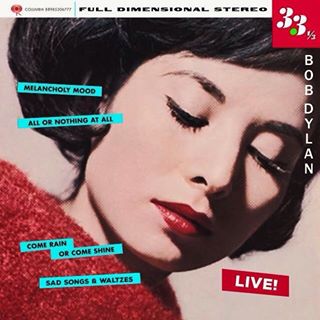
Debo explicar aquí que Dylan pudo haber cantado desde siempre baladas románticas o cualquier tipo de melodías populares. Que sin duda el joven intérprete podía acometer ya en sus comienzos cualquier estilo que quisiera. Pero la forma en que lo hizo, más aún en la etapa de Nashville Skyline, no tenía nada que ver con la autoridad, la gravedad testimonial y la marcada profundidad de las interpretaciones actuales. Dylan trata las canciones de Sinatra como auténticos dramas, hasta el punto de incluso llegar a ser casi melodramático, pero aún así manteniendolos dentro de los límites del nivel de profundidad de su propia visión, un tanto desoladora. Creo sinceramente que estos 2 últimos discos son realmente tan relevantes y comprometidos con el legado de la humanidad como lo era “Tempest”.
Afortunadamente, no soy el único que encuentra las interpretaciones en directo de este material antiguo profundas, emotivas y sugerentes. En el Informe Rogovoy (Un compendio de noticias culturales y observaciones por Seth Rogovoy) en su crítica del concierto en Tanglewood, Stockbridge, MA del 2 de Julio de 2016 que él tituló “Detrás de Cada Cosa Hermosa Hay Algún Tipo de Dolor (Behind Every Beautiful Thing, There’s Some Kind of Pain)”, Rogovoy escribió que el espectáculo “era una profunda obra de teatro musical que se basaba menos en su repertorio que en los estados de ánimo que su particular elección de las canciones evocaban.” y unas cuantas líneas más adelante decía, “Pero aquellos que simplemente abrieron sus mentes a lo que estaba ocurriendo en el aquí-y-ahora fueron obsequiados con un concierto tan feroz y atractivo como cualquier fan de Dylan haya podido presenciar jamás”. Más tarde, hablando de los temas pre-rock, como “The Night We Called It A Day”, “Melancholy Mood” y “How Deep Is The Ocean?”, entre otros, declara: “Esas canciones, intercaladas como lo fueron en su mayor parte entre las canciones originales… cantadas con una belleza y delicadeza sorprendentes, sirven más como una cierta ligereza y alivio después de los golpes devastadores, la rabia profética, los relatos de violencia apocalíptica y el trueno musical de canciones tales como ‘Pay In Blood’ y otras… retratando un campo de batalla lleno de cicatrices de una humanidad traicionada, cantado con una voz desolada y desgarrada”.
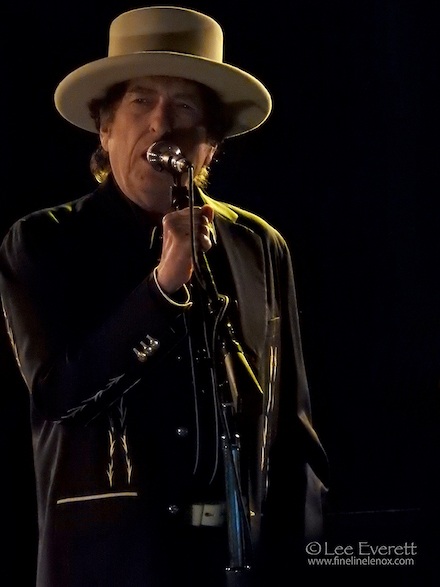
Bob Dylan Tanglewood, Stockbridge, MA 2 de julio de 2016
Estos dos últimos álbumes de Dylan, no son entonces un mero tributo a Frank Sinatra, sino más bien un homenaje a los hombres que escribieron esas canciones, como dice Rogovoy. El legendario compositor “se aventura a reclamar para estas canciones en su propio nombre, el mérito, en virtud de su condición de canciones escritas por hombres como él, que encontraron la traición en cada promesa, que detrás de cada victoria encontraron el engaño, que saben que ‘Detrás de Todo lo Bello Hay Algún Tipo de Dolor'”. De hecho, si pensamos en los títulos de ambos discos,”Shadows In The Night (Sombras en la Noche)” y “Fallen Angels (Angeles Caídos)”, nos damos cuenta de que ambos tratan sobre el lado oscuro de la vida, la traición, almas perdidas y ángeles de desolación. Y sea lo que sea que signifiquen para el propio Bob Dylan, en ambos le encontramos clamando en el desierto.
El Coleccionista Hipnótico
Bibliografía:
Kuntzman, Gersh – New York Daily News (24 de Mayo de 2016) At 75 Years Old, It’s Time For Burnt Out Bob Dylan to Retire. Consultado el 2 de Julio de 2016 en http://www.nydailynews.com/entertainment/music/75-years-old-time-burnt-bob-dylan-retire-article-1.2647932
Dwyer, Jim – The New York Times (28 de Junio de 2016) Could This Be the End of Paul Simon’s Rhymin’? Consultado el 4 de July de 2016 en http://www.nytimes.com/2016/06/29/nyregion/paul-simon-retirement-stranger-to-stranger.html
Rogovoy, Seth (2 de Julio de 2016) (Concert Review) Behind Every Beautiful Thing There’s Some Kind of Pain: Bob Dylan, Tanglewood, 7.2.16. Consultado el 4 de Julio de 2016 en http://rogovoyreport.com/2016/07/04/bob-dylan-tanglewood-review-seth-rogovoy/
